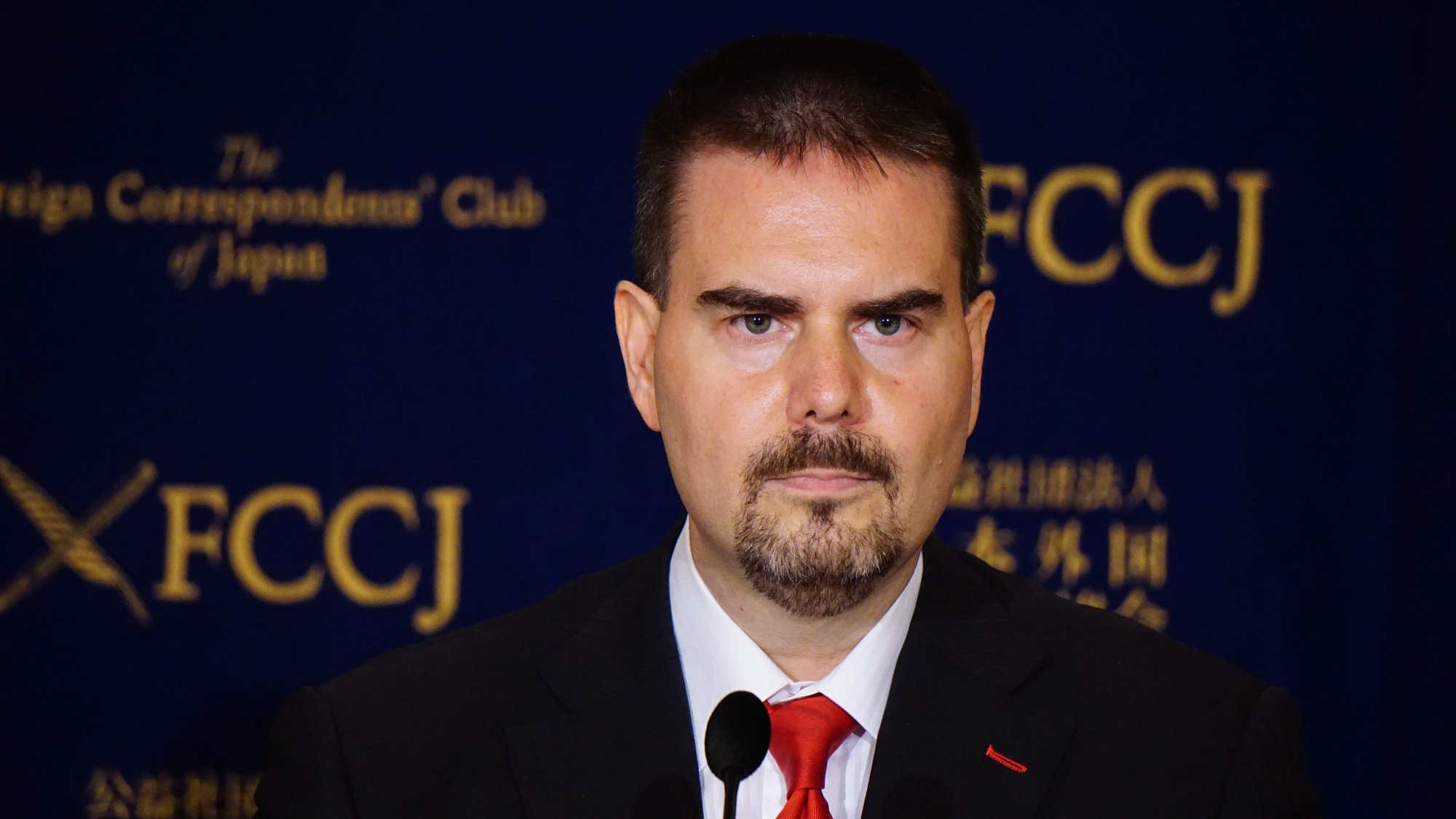BY JAMES MCCROSTIE
CONTRIBUTING WRITER
On paper, mothers and fathers are entitled to take child care leave (ikuji kyūka) at the same time for up to a year and receive two-thirds salary for the first six months and half salary for the second six months. However, eligibility depends on having worked for your current employer at least a year and expecting to be employed a year later.
Despite this, maternity harassment is a longstanding problem in Japan (see Hifumi Okunuki’s 2014 column, “Maternity harassment verdict benefits women, men — and our humanity”). Known in Japanese as matahara, this can take the form of physical or mental harassment, contract nonrenewal, dismissal or any other disadvantageous treatment in response to a women’s pregnancy, childbirth or raising of a child. It’s against the Labor Standards Law, the Equal Employment Opportunity Act and a third law, whose drafters worked overtime to name: the Act on the Welfare of Workers Who Take Care of Children or Family Members, Including Child Care and Family Care Leave.
Similarly, “paternity harassment” refers to when a man’s attempt to take time off for child care leave is interfered with or they suffer from disadvantageous treatment or harassment. Two cases currently before the courts show how the reality of Japanese workplaces can clash with government attempts to encourage fathers to help raise their children.
Cleeve v. Shane Corp.
Adam Cleeve, a teacher employed on a fixed-term annual contract at Shane Corp. and president of Shane Workers Union, a chapter of Tozen Union, is suing the English conversation school chain in the Tokyo District Court and the Tokyo Labor Commission to get his job back after the company failed to renew his contract following his daughter’s birth.
Cleeve’s wife was due to have their first child in mid-November 2016. According to Cleeve, Shane management first refused his request in early summer for time off in November and December saying he didn’t have enough remaining paid leave. Shane teachers get 20 days paid leave a year but the company tells everyone when to take 15 of the days. In October 2016 the union filed a complaint over this practice with the Labor Board, which subsequently told Shane to amend its paid leave policy.
Due to complications, Cleeve’s wife had to be hospitalized for two weeks. Doctors tried unsuccessfully to induce birth and then, due to an infection, delivered their daughter by emergency C-section on Nov. 26 of that year. Despite the company’s refusal, Cleeve ended up taking 24 days off from Nov. 14 to the start of school holidays on Dec. 21. “While I’m going through all this, I’m getting emails to go back to work,” Cleeve recalls.
In November, he applied for child care leave to begin on Jan. 10. Shane managers eventually agreed, but on Jan. 9, the company sent him notice that his second annual contract wouldn’t be renewed when it ended Feb. 28. Cleeve lost both his job and eligibility for paid child care leave.
According to Louis Carlet, senior organizer at Tozen, Shane says Cleeve’s nonrenewal was decided based on his absence without permission — the days he took off to support his wife during her difficult childbirth. However, Carlet points out that Cleeve is also the leader of a union that has been agitating for teachers to be employed permanently rather than on fixed-term contracts. Therefore, he suggests, it could be that the real reason for his nonrenewal was his union activities.
Without a job, Cleeve receives no salary or child care benefits.
“I have no income. I can’t apply for unemployment insurance (benefits) because I have to be available for work. My wife has already gone back to work. We can’t get a nursery school because I’m not considered by my employer as employed, yet I can’t look for another job because I have to take care of our child. Our whole plan was I’d get ikuji kyuuka for a year”, Cleeve says.
In an email, a Shane spokesperson declined to comment because the case involved personal information and was before the Tokyo District Court.

Wood v. MUFJ Morgan Stanley
Receiving more attention in the Japanese and international press has been Glen Wood’s lawsuit against Mitsubishi UFJ Morgan Stanley Securities. In October, the 47-year-old equity sales manager filed a lawsuit in the Tokyo District Court alleging paternity harassment and requesting the court overturn his unpaid suspension.
In a presentation in November at the Foreign Correspondents’ Club of Japan that’s now viewable on YouTube, Wood says he began experiencing trouble at work after informing superiors he might have to take time off due to his partner’s difficult pregnancy.
Then, in October 2015, after his son was born six weeks early in Nepal, Wood claims management refused to let him take time off. Two days after the birth, with doctors saying his son was on a feeding tube and near death, Wood left Japan without permission.
As he did not have a copy of a Maternal and Child Health Handbook, which is issued to pregnant mothers by Japanese local city offices, the company also initially denied the single father’s child care leave request. Asked at the FCCJ why the mother isn’t helping raise the child, Wood told a Japan Times staff reporter, “It’s a personal issue and I won’t go into detail,” adding that he and the mother agreed that he would raise the child in Japan.
After submitting DNA test results proving paternity, Wood finally received child care leave in December. A spokesperson for Mitsubishi UFJ Morgan Stanley Securities defended the delay in approving Wood’s child care leave, writing, “We actively support the acquisition of child care leave regardless of sex or nationality.” Explaining the approval of Wood’s leave, the company said, “took more time than usual due to procedural reasons, but the company responded as soon as possible.”
But returning to work in March 2016, he says he was demoted and suffered bullying, such as not being informed of meeting times. Becoming depressed, he took six months of sick leave from January 2017. After receiving a doctor’s approval to return to work, Wood says the company demanded he accept another demotion with a 50 percent cut in pay. After he refused, the company suspended him without pay from Oct. 18, sparking his lawsuit.
A spokesperson for MUFJ Morgan Stanley Securities would not say why Wood got suspended, writing in an email that they couldn’t discuss specific human resource decisions.
According to Hifumi Okunuki, the executive president of Tozen Union, Japanese courts have issued only one ruling related to paternity harassment. An Iwakura Hospital nurse sued Tomon Medical Corp. after being denied an annual raise when he returned to work after taking more than three months of child care leave. The hospital also refused to let him take an exam for promotion, saying he wasn’t eligible for performance appraisal. He sued, and on July 18, 2014, the Osaka High Court awarded the nurse damages, ruling the hospital’s refusal of the raise and promotion exam violated the law prohibiting discrimination against those who take child care leave.
Time will tell if the Cleeve and Wood cases result in court precedents for future fathers to use.
Regular columnist Hifumi Okunuki, who teaches at Sagami Women’s University and serves as executive president of Tozen Union, will return next month. She can be reached at tozen.okunuki@gmail.com. Labor Pains appears in print on the last Monday Community page of the month. Send your comments and Community story ideas to community@japantimes.co.jp.

